Masking tape is a versatile material that can be used in various scenarios. But is masking tape safe to be used on walls? Let's take a look before using it in your home.
The adhesive on masking tape can be strong enough to leave a sticky residue on walls and other surfaces.
As a result, it can be difficult and time-consuming to remove. It can also cause newly painted walls to peel, potentially damaging them.
It's important to understand when and when not to use masking tape for a home project. In this article, we will discuss the pros and cons of using masking tape on walls.
In addition, we will answer other frequently asked questions about masking tape and other solutions, so read on!
Will Masking Tape Damage Walls?
Masking tape has different levels of adhesiveness which can determine how much damage it can do. The stronger the adhesive, the more likely you are to cause peeling or staining on your walls if you leave it on too long.
This can set your project back significantly and cost a lot of money in repairs. This is why it's important not to grab any masking tape you find and to make sure to get the appropriate type for your project.
For example, getting painter's tape is best if you are doing a painting project. Painter's tape is a type of masking tape that is designed to be used around walls and other surfaces.
It has a low-tack adhesive, so it doesn't leave residue or peel paint, making it more appropriate for these tasks.
Painter's tape is usually labeled, so you know which one to use. For example, painter's tape will say "interior" or "exterior," which will let you know that it is best used in those types of tasks.
Another thing to consider is that you should be careful when removing the masking tape, especially if it's been on your walls for a while. Take your time when doing so, as it can potentially leave residue or peel paint if removed too quickly.
Also, if you used masking tape to block off trim or another wall area, be sure to wait until the paint dries. If you don't, you will take the paint with you when you remove the tape, potentially damaging your walls.
If it doesn't ruin your walls, it will cause a lot of extra work in patching and repainting the affected area. In this case, waiting for the paint to dry is better before removing the masking tape.
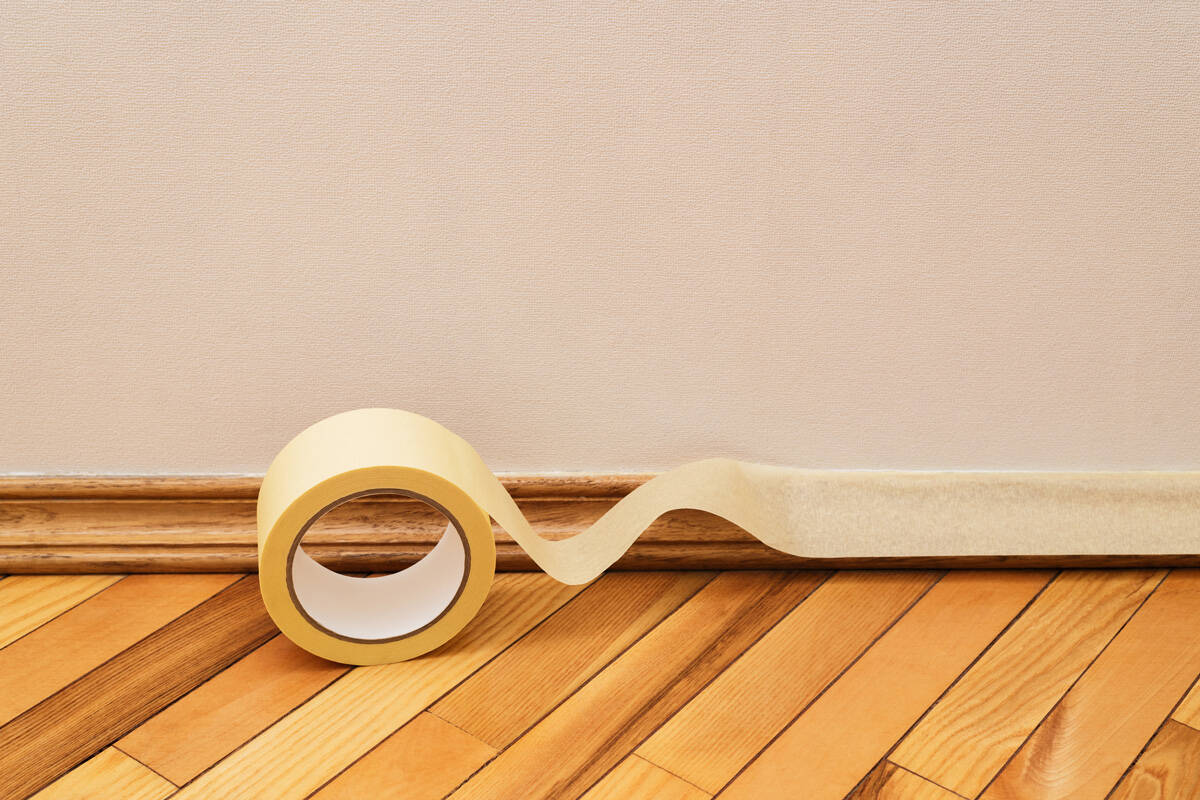
How Long Can You Leave Masking Tape On Walls?
When it comes to painting, tape is an important tool. Unless you have an incredibly steady hand, keeping the paint from getting on areas you don't want it is impossible.
But how long can you leave masking tape on walls? When the paint is dry to the touch, it should be safe to remove the masking tape. Typically, this can be an hour or two, depending on the paint used.
There are a few factors that go into when the right time to remove the tape is. Let's take a look below:
Type Of Surface
Every surface is different in how masking tape adheres to it. For example, paint on wood dries quickly and can be removed after about an hour.
On the other hand, paint on concrete or metal will take a bit longer to dry, so you should wait a few hours before removing it.
Type Of Paint
Not all paint is created equal. There are different types of paint, from oil-based paints to latex. Each type will dry at a different rate and require different amounts of time before the tape can be safely removed.
For example, oil-based paints can take several hours before they are completely dry. Latex, on the other hand, can dry within a few hours.
So, when in doubt, it's best to wait a bit longer before taking off the masking tape. This way, you can be sure there won't be any residue or damage to your walls.
Number Of Paint Coats
The more coats of paint that are applied, the denser the paint will be and the longer it will take to dry. This means that if you are doing a project with multiple coats, it doesn't hurt to double the time to ensure that the paint is completely dry before removing the tape.
If you aren't in a rush, waiting a little longer can save you time and money in the long run.
Heat And Humidity
Lastly, the temperature and humidity level of the room will also affect how long it takes for the paint to dry. If you are painting outside in a hot and dry climate, paint can dry quickly.
However, the paint will take longer to dry if the temperature and humidity levels are high.
The same goes for a colder room with low humidity. It might take a bit longer for the paint to dry, so make sure you account for this when deciding how long you should leave the masking tape on the walls.
Regardless of what type of project you are working on, it's always important to be mindful when removing masking tape from surfaces. Being patient and waiting until the paint is dry will ensure that you won't damage your walls or have to do extra work.
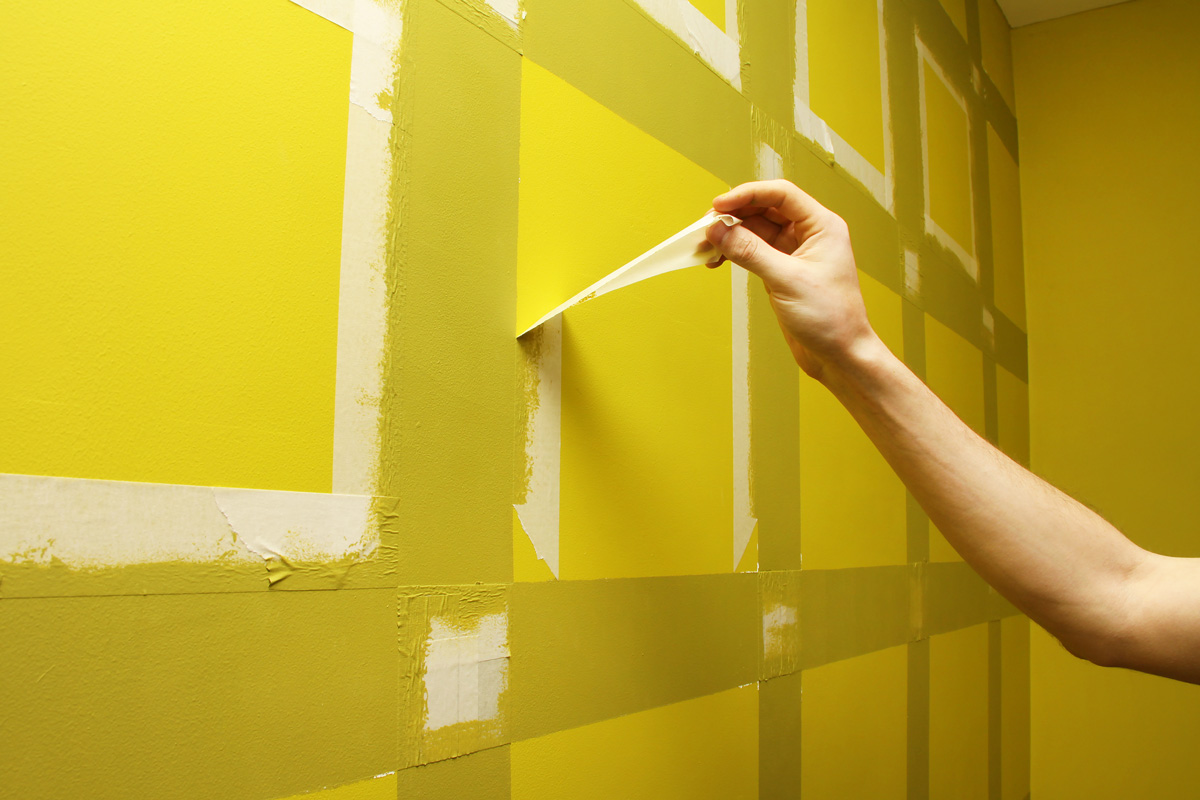
How Do You Remove Masking Tape Without Damaging Walls?
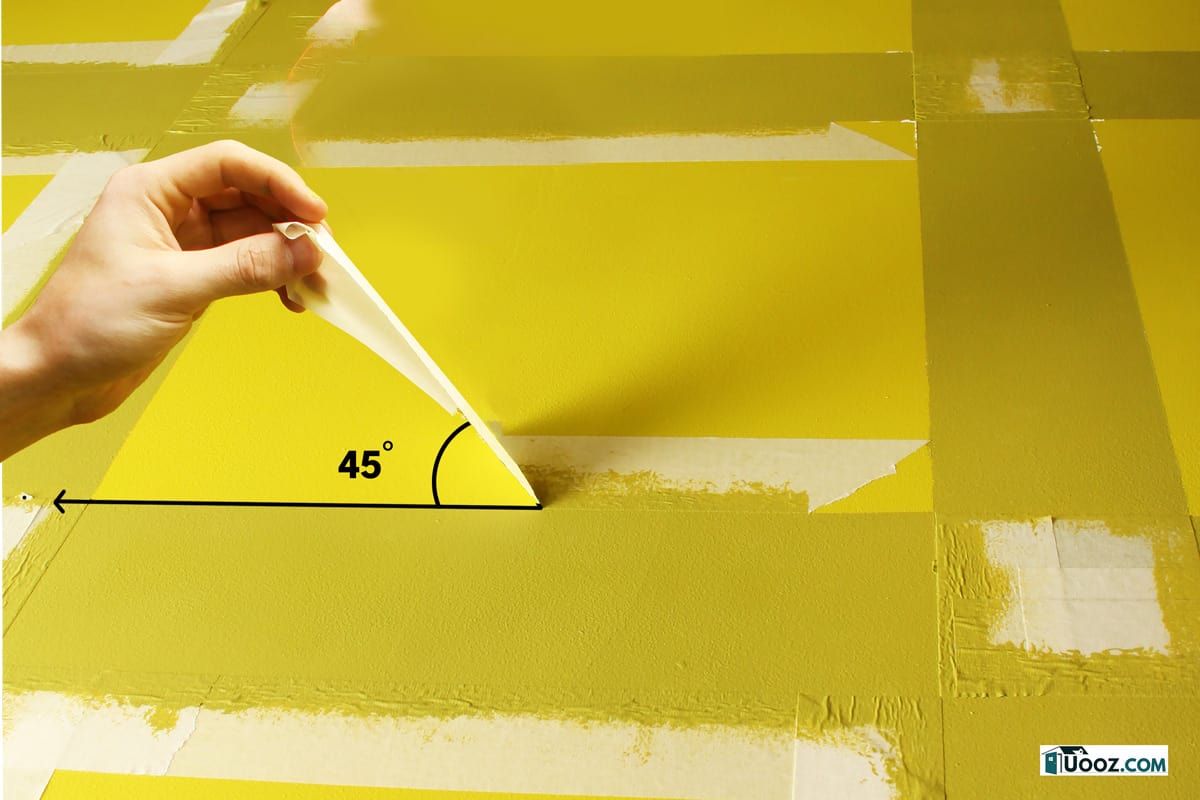
Removing masking tape without damaging your walls is an art in itself. It can be tricky, but it is possible. The key is to take your time and be gentle when you are taking off the tape.
Once your paint has completely dried, start by slowly peeling the tape off the wall at a 45-degree angle. This will help ensure that you don't pull any of the paint off with the tape.
If the paint starts to pull off with the tape, use a cutter to trim the edges near the wall carefully. This will make sure that no paint gets pulled off as you take off the tape.
Once the tape is off, check the walls for any remaining residue. If there is still some residue, you can use a damp cloth to remove it. Make sure you don't scrub too hard, as this could cause damage to the wall.
What Happens If You Leave Masking Tape On For Too Long?
The longer the masking tape is left on after the paint has dried, the more likely it will be to damage your walls. The adhesive in the tape can start to pull away at the fresh paint, leaving streaks and marks behind.
It can also leave a sticky residue that is difficult to remove. Sometimes, you may even have to repaint the walls to eliminate all the residue.
In short, it's important to remove masking tape as soon as your paint is dry. This way, you can avoid any damage caused by leaving it on for too long.
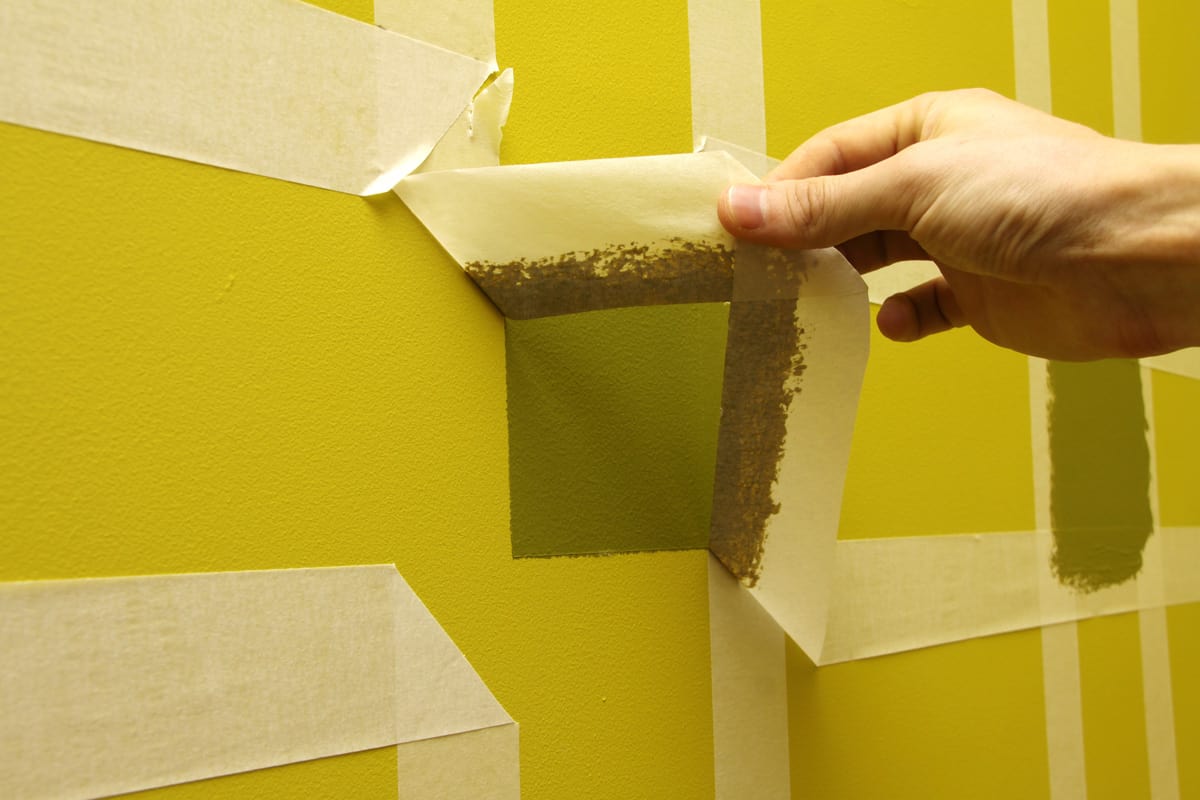
What Is The Best Way To Lay Masking Tape Before Painting?
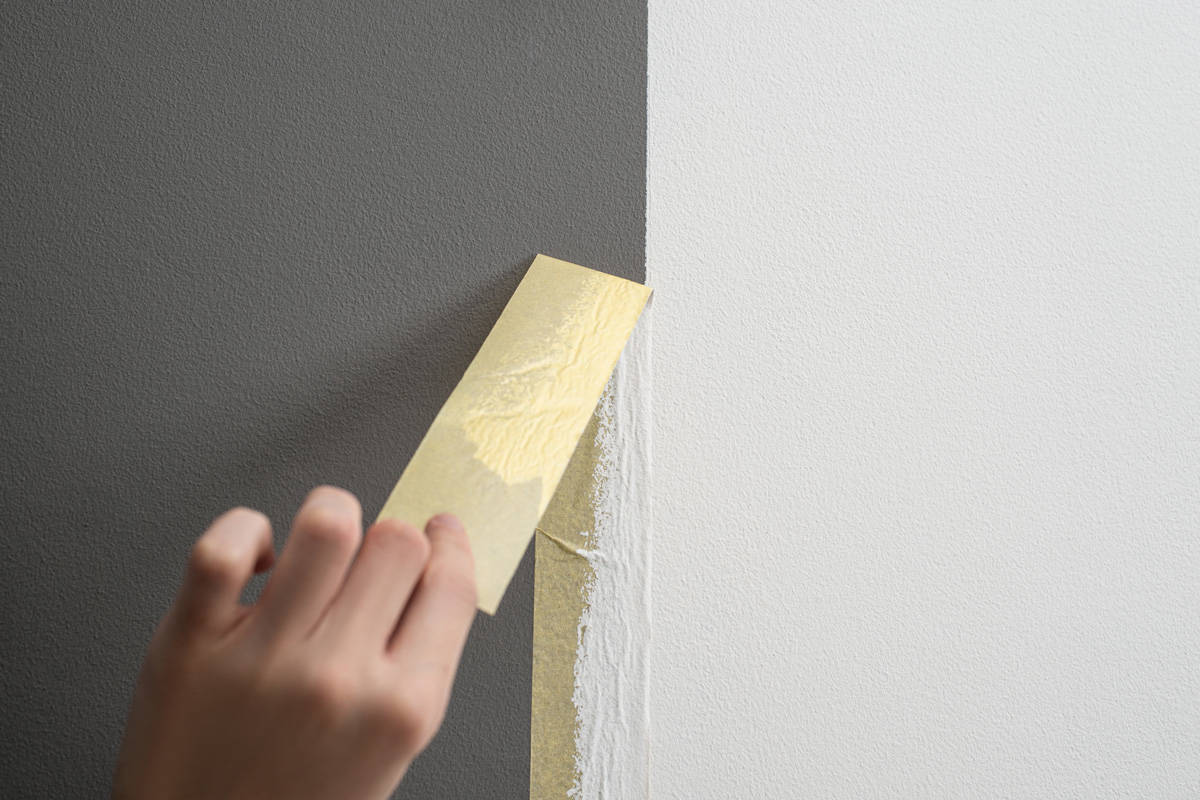
Masking tape is an essential tool when it comes to painting. However, if you don't place it correctly before starting, it may not stick properly, or it could cause damage to the wall.
Clean The Surface
The first step is to clean the surface that you are going to be painting. This will ensure the tape has a clean surface to stick on and remove any dust or debris that could get in the way of your paint job.
One of the main reasons masking tape won't stick is due to debris or moisture. So it's essential to make sure the surface is clean and dry before you start.
Lay The Tape
Once the surface is cleaned, it's time to lay down the tape. Start by pressing down one edge of the tape and then gradually work your way across the surface.
Let It Set
Before starting the paint job, make sure you let the tape set for 30-60 minutes. This will ensure that it is stuck firmly to the wall and won't come off as you paint.
By following these steps, you can make sure that your masking tape is properly laid out and ready for painting.
This will help ensure a smooth and even paint job without any remaining streaks or marks. With a little patience and careful preparation, you'll be able to get the job done without any issues.
Final Thoughts
Overall, masking tape can be useful when painting, but it's essential to use it correctly. Taking your time and following the steps listed above can help you get the best results and avoid any damage to your walls.
Ask a professional for advice if you aren't sure what masking tape to use for your project.
Made it to the end? Here are other articles you might find helpful:
How To Remove Gorilla Tape And Remaining Residue?
